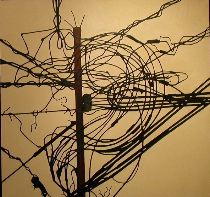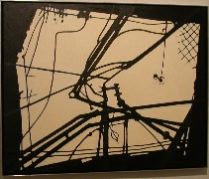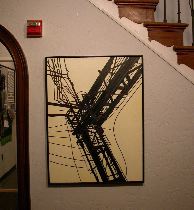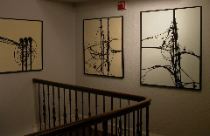 The level of frustration by artists in Philadelphia who are unable to get reviews for their very good work manifests itself every once in a while in in my inbox at the Weekly. Artists work really hard, there are lots of them, and the print media, well it just doesn’t cover as much as it should. (There are many reasons, of course, from money to inbred prejudice against “high” art in a populist publication.)
The level of frustration by artists in Philadelphia who are unable to get reviews for their very good work manifests itself every once in a while in in my inbox at the Weekly. Artists work really hard, there are lots of them, and the print media, well it just doesn’t cover as much as it should. (There are many reasons, of course, from money to inbred prejudice against “high” art in a populist publication.)
Anyway, the recurring question, posed in emails again and again, is “How do you go about getting a review in this @#$%*$%* town?”

It’s like this all over the world, right? There are more artists and more venues than there are serious reviewers. There’s no steady stream of public dialog about art. No context, no validation or dismissal…Maybe in New York there is critical mass of critics. But even there I can’t believe there are enough live critics to do the job required by all those serious venues.
This is one big reason Libby and I created Artblog. There’s a need and we’re trying to get around and fill it.
 Anyway, let that be the preamble.
Anyway, let that be the preamble.
Hale Allen, an artist who had a Fleisher Challenge exhibit a few years back, emailed me of his show at St. Joe’s University. He sent me the postcard for the show — it had a great image of his work on the card. He did everything right. And here it was, eight days before the show closes on Dec. 10 and I finally got over there to see the work yesterday. (top image is “Enabler;” right above is “Hellhole.”)
I’d written about Allen and the Fleisher show — for PW and in a Philadelphia Story for artnet; I liked his work — it was oil paintings of hulking infrastructure (power plants, wires, etc) done beautifully and imbued with a kind of obsessive love that took it to another level. It reminded me of the Becher’s photographs of coal processing plants — there was something unnaturally pristine about the affect that you bought in the same way you buy cosmetically-altered photographs of movie stars and pretty, Renaissance paintings of the dying Jesus on the cross. While not exactly anthropomorphic, all the structures Allen portrayed were portraits, not landscapes, and they had personalities. (left is “Highend.”)

This new body of work (all oil painting, easel sized) seems an outgrowth of the earlier works and I like it even better. The artist’s chipped away at his subject and narrowed his focus to the knotty, cobbled-together electrical and cable lines that dominate the landscape. Transformerland — isn’t that just about the best thing to focus on in our knotty, weirdly wired time? (right is installation shot)
Allen has silhouetted his knots and poles against creamy or yellow backgrounds, setting them in a void of space that makes them monumental instead of real. And his blacks are not black — they are made up of blue, red, brown and other colors, which you see evidence of around the edges, aura-like. The work is elegaic and lyrical, musical and angry. It’s a potent combination and seems to sum up life nowadays, full of sadness, questioning and hopes for something better.
Boland Hall at St. Joes is a lovely little art building with an upstairs hallway gallery and a nice, although small downstairs space. I recommend a visit. Boland is on Lapsley Lane and City Ave., between 54th St. and Cardinal Ave.









